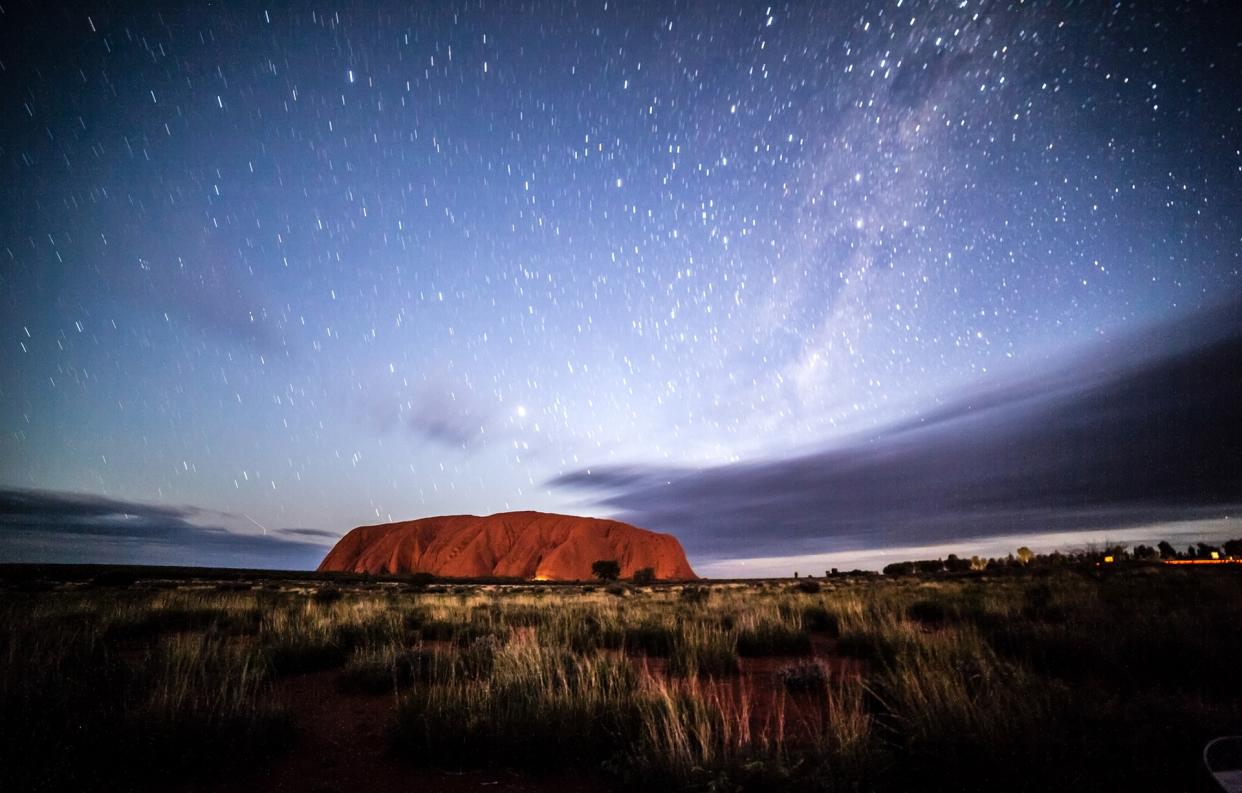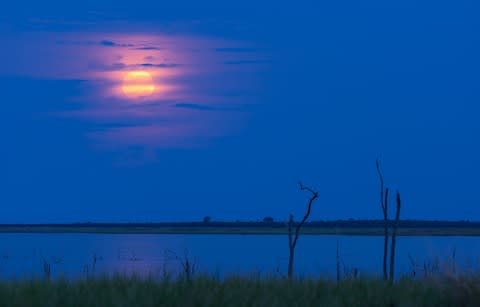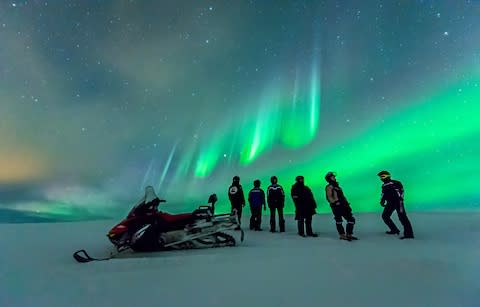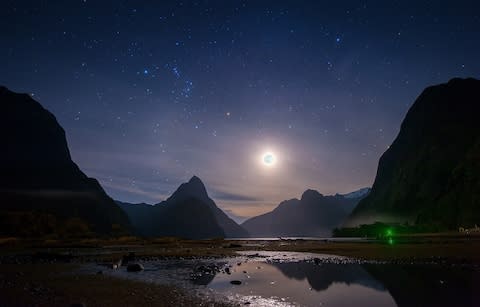The best cruises for stargazers

Don't know your Ursa Major from your Ursa Minor? A cruise can be a fantastic way to learn more about the solar system (while also visiting some amazing destinations) – whether you’re an astronomy novice or a constellation expert.
Plus, observing the night sky is much easier when you're on a cruise ship – out at sea, far away from artificial light. The best bit? A number of cruise lines are now offering dedicated astronomy sailings, too.
The Canary Islands
Stargazers who head to the Canary Islands have the trade winds breezes (and the temperature inversion they generate) to thank for the spectacular night skies – the prevent clouds from forming. The presence of three official Starlight Reserves on the islands ensures the clarity of the night sky remains protected by laws relating to light, atmospheric and radio wave pollution, as well as flight patterns. The best views are from the water, where's there's even less light pollution.
On Royal Caribbean's 14-night Canaries Adventure the two nights you’ll spend sailing from Cádiz to the Canary Islands will be a fantastic opportunity for some constellation spotting. Stop-offs include Tenerife’s Teide National Park, a designated Starlight destination.
A 14-night Canaries Adventure cruise with Royal Caribbean sails from Southampton. From £1,399pp, departing June 29, 2019 (0844 493 4005; royalcaribbean.co.uk).

Africa
Lake Kariba, on the border between Zimbabwe and Zambia, is the world's largest manmade lake and one of Africa’s best stargazing destinations, thanks to the lack of light pollution.
A cruise on Lake Kariba is one of many highlights of CroisiEurope's Southern Africa: Travel to the Ends of the Earth cruise, which has plenty for landlubbers too, including a safari in the wonderfully remote Matusadona National Park.
Regent Seven Seas Cruises' Cape Town to Rio de Janeiro cruise includes stop-offs in Namibia, home to Africa's First International Dark Sky Reserve. Namibia is also one of the world’s most sparsely populated countries, which means minimal light pollution. The views of the Milky Way and the Magellanic Clouds are particularly spectacular.
A nine-day Southern Africa: Travel to the Ends of the Earth cruise with CroisiEurope begins in Johannesburg, South Africa on December 8, 2019. From £4,469pp (0208 328 1281; croisieurope.co.uk).
A 14-night Cape Town to Rio de Janeiro cruise with Regent includes two days in Namibia. From £5,239pp, departing January 6, 2019 (02380 682 280; rssc.com).

Antarctica
The cold, dry air above Antarctica is so still that the light from distant stars is disrupted far less than anywhere else on the planet. It’s also far away from urban light, heat and smog. Mundy Adventures' 20-day solar eclipse cruise gives you plenty of time for star-spotting. The highlight is the opportunity to witness the total solar eclipse on December 4, 2021. You'll watch it from a remote spot in the Scotia Sea, as part of a voyage, which includes visits to the Falkland Islands.
National Geographic Expeditions' Journey to Antarctica cruises are another option – opt for the one that departs December 9 or 19, 2019 and you'll be joined by photographer and film maker Nick Cobbing, who'll help you perfect your photos of the night sky.
The 20-day Polar Solar Eclipse cruise with Mundy Adventures (operated by Oceanwide Expeditions) sails from Ushuaia, Argentina. From £16,735pp, departing November 25, 2021 (020 7399 7630; mundyadventures.co.uk).
A 14-day Journey to Antarctica cruise with National Geographic Expeditions will be joined by Nick Cobbing. From £12, 640, departing December 19, 2019 (nationalgeographic.com/expeditions).

The Atlantic
It doesn't get more remote than the middle of the Atlantic, thousands of miles from artificial light. If you’re planning on combining a transatlantic crossing with some stargazing, heed these tips: areas forward of the bridge will usually be the darkest spots (although modern ships are less likely to have public areas here); avoid areas near brightly-lit stairwells; think about wind direction – you don’t want smoke from the stacks clouding your view.
One of the best opportunities for some transatlantic stargazing is on Cunard’s Queen Mary (QM2). You can head to the on board planetarium to brush up on your knowledge of the solar system and sign up for lessons in celestial navigation.
A seven-night westbound transatlantic crossing on the QM2 with Cunard sails from Southampton. From £1,065pp, departing April 14, 2019 (0344 338 8650; cunard.co.uk).

The Arctic
Some of the night sky’s most exciting phenomenons are best admired from inside the Arctic Circle. In winter, icy temperatures and near-constant darkness create the perfect conditions, although certain constellations can be seen year round. These so-called circumpolar constellations include the North Star.
Seasonal constellations visible from the Arctic Circle include Cancer, or the crab, best viewed in early spring, and Pegasus and Andromeda in autumn. To gain a deeper understanding of Arctic astronomy, book a place on Hurtigruten's Astronomy Voyage, during which you’ll visit the Northern Lights Planetarium in Tromsø and cross into the Arctic Circle.
A 12-day Astronomy Voyage with Hurtigruten sails from Bergen, Norway. From £1,610pp, departing November 20, 2019 (02031 316 309; hurtigruten.co.uk).

Australasia
The southern sky has three of the brightest stars (Sirius, Canopus, and Alpha Centauri) and fantastic stargazing opportunities, including breathtaking views of the Large and Small Magellanic Clouds – galaxies too far south to see from the northern hemisphere. Visit New Zealand – or the waters around it – and you can stare directly up into the Milky Way.
Princess Cruises' 20-day Australian Outback tour includes a 14-day cruise and a six-day land tour. On the latter, you'll visit Ayers Rock to admire the beauty of Australia's star-filled southern skies.
Short on time? Consider Royal Caribbean's New Zealand cruise, which visits New Zealand's Milford Sound, a fjord in the South Island – 1,660 square miles (4,300 square kilometres) of which is an International Dark Sky Reserve.
An 20-day Australian Outback tour with Princess Cruises departs from Auckland, New Zealand. From £3, 899pp, departing December 30, 2019. (0344 338 8663; princess.com).
A nine-night New Zealand cruise with Royal Caribbean sails from Sydney. From £1,139pp, departing October 20, 2019 (0844 493 4005; royalcaribbean.co.uk).
Star-spotting supplies
Patience isn't the only thing stargazers need a lot of – battery power is another, especially if you're using dedicated stargazing apps. For this reason, invest in a decent power bank, such as the Anker PowerCore 5000. Don't forget to pack decent gloves, either – ideally with extra grip to help you keep a tight hold on cameras and telescopes. North Face's Etip Gloves are designed to work with smart phones.


